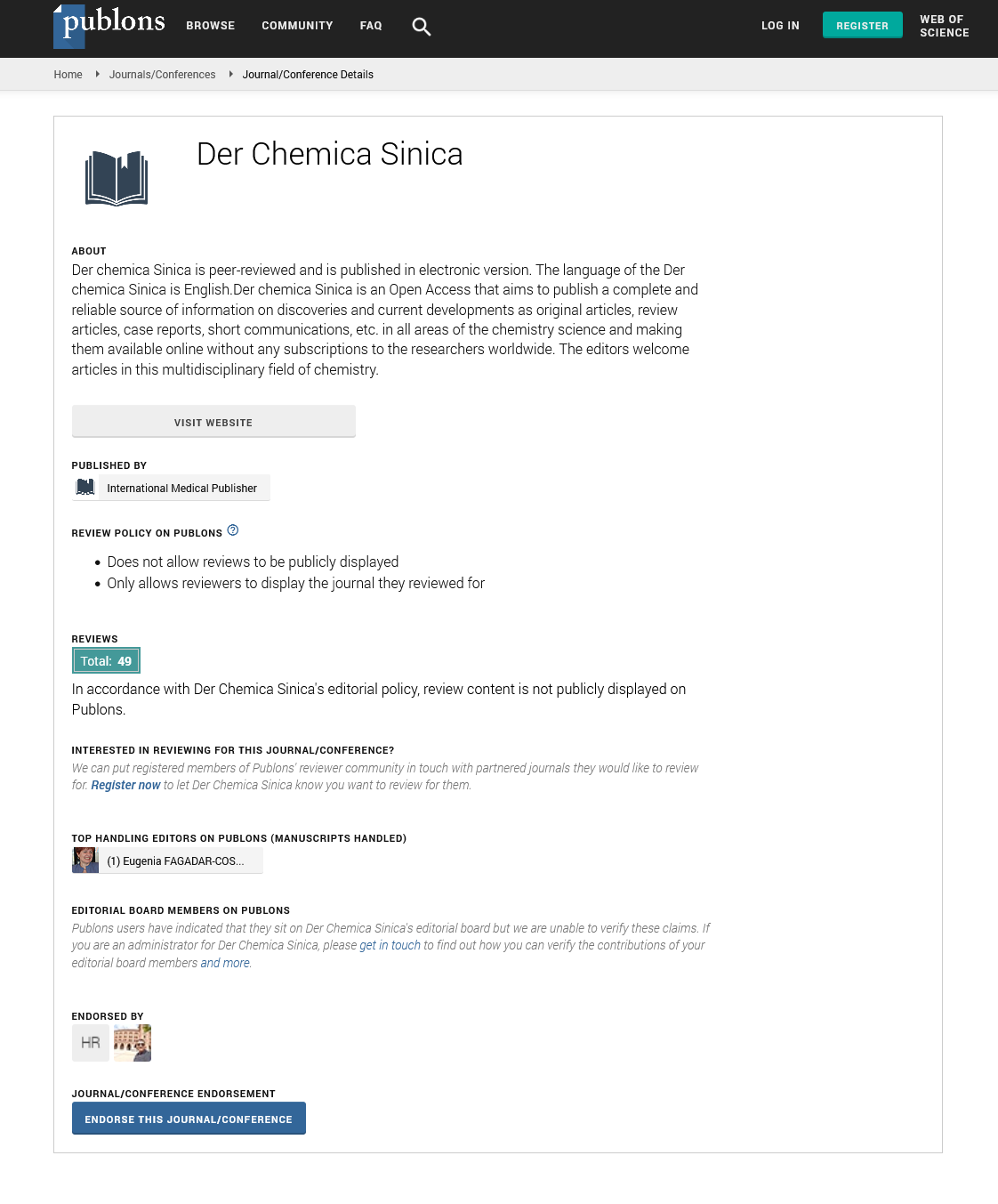ISSN : 0976-8505
Der Chemica Sinica
Abstract
Novel acrylic copolymers derived from Paracetamol: Determination of reactivity ratio, microbial screening and thermal properties
The monomer p-acetamidophenyl methacrylate (PAPM) has been synthesized by reacting paracetamol with methacryloyl chloride using methanol as solvent. Homopolymers of PAPM, quinoline methaacrylate (QMA) and its copolymers were synthesized by free radical polymerization technique using 2,2’-azobisisobutyronitrile (AIBN) as an initiator with different monomer-to-monomer ratios in the feed. The prepared copolymers were characterized by FT-IR spectroscopy. The copolymer composition was evaluated by 1H-NMR and was further used to determine reactivity ratios. The monomer reactivity ratios for PAPM (M1)-QMA (M2) pair were determined by using Fineman-Ross (F-R) (r1 =0.66; r2 =1.12), Kelen-Tudos (K-T) (r1 = 0.66; r2 = 1.12) and extended Kelen-Tudos (Ex.K-T)(r1 = 0.65; r2 = 1.13) methods. Thermogravimetry analysis (TGA) showed that thermal decomposition of the polymer occurred in a two step. The first step decomposition occurs in the ranges from 224°C to 350°C whereas second step ranges from 350°C to 503°C. TGA data also showed that activation energy of all poly(PAPM-co-QMA) are in range of 38-52 K.J.mole-1.The values of integral procedural decomposition temperature (IPDT) calculated by Doyle’s method for copolymers is in the range of 379°C -389°C. Activation energies (Ea) calculated by Broido’s method are in the range of 41-52 K.J.mole-1 for poly(PAPM-co-QMA). The characteristic temperature and kinetic parameters for the homo and copolymers have been obtained from DTA traces using Reich’s method. The molecular weights of the polymers were determined using gel permeation chromatography. All polymers were tested for their antimicrobial property against various microorganisms and found to possess significant antimicrobial activity. The composition of copolymers can be regulated to have materials of desired property.
Author(s): Jignesh B. Dholakiya1, Hetal J. Patel1, Kirit H. Patel1 and Rajni M. Patel2
Abstract | PDF
Share This Article
Google Scholar citation report
Citations : 6019
Der Chemica Sinica received 6019 citations as per Google Scholar report
Der Chemica Sinica peer review process verified at publons
Abstracted/Indexed in
- Google Scholar
- Open J Gate
- Genamics JournalSeek
- China National Knowledge Infrastructure (CNKI)
- Directory of Research Journal Indexing (DRJI)
- Publons
- MIAR
- International Committee of Medical Journal Editors (ICMJE)
- Serials Union Catalogue (SUNCAT)
- Geneva Foundation for Medical Education and Research
- Secret Search Engine Labs
- Euro Pub
- CAS (Chemical Abstracting Services)
- University of Barcelona
Open Access Journals
- Aquaculture & Veterinary Science
- Chemistry & Chemical Sciences
- Clinical Sciences
- Engineering
- General Science
- Genetics & Molecular Biology
- Health Care & Nursing
- Immunology & Microbiology
- Materials Science
- Mathematics & Physics
- Medical Sciences
- Neurology & Psychiatry
- Oncology & Cancer Science
- Pharmaceutical Sciences
